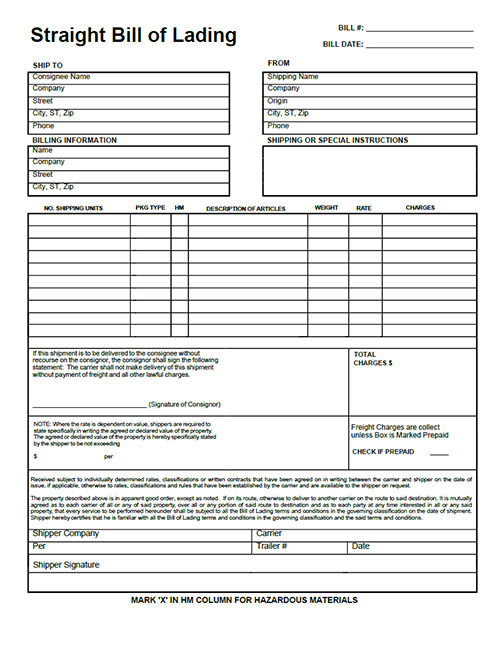 It seems that many shippers have a lot of questions about the Bill of Lading – BOL document used when shipping freight. This document is essential for shippers and carriers alike, and even more important that the information is accurate.
It seems that many shippers have a lot of questions about the Bill of Lading – BOL document used when shipping freight. This document is essential for shippers and carriers alike, and even more important that the information is accurate.
What is a Bill of Lading BOL Document?
A bill of lading is a legally binding document between the shipper of the goods and the carrier detailing the type, quantity, and destination of the goods being carried. The BOL document also serves as a receipt of the shipment once they are received at the agreed upon destination. This document must accompany each freight shipment and must be signed by an authorized representative from the carrier, shipper, and consignee.
Bills of lading are official documents and can be admissible in a court of law. They represent an official agreement between a shipper and carrier they lay out where the goods will be transported, and when it will arrive. The BOL can also serve as the title to the goods being moved, or an official description of loan collateral.
Who Issues a Bill of Lading BOL Document?
This is where it can sometimes get tricky, especially if you have very specific information that you need on your BOL, such as specific order numbers, reference numbers, or elaborate descriptions. In the end, a BOL can be created by one of three entities: the shipper, the carrier or the 3PL working on the shipper’s behalf.
Oftentimes a shipper will prefer to use their own BOL generated through their ERP system as it can be super specific and customized to what they need. For example, one of our customers has a very detail BOL that they use as both their packing slip and BOL, so it must have extra information on it. This is also helpful when sales/order numbers are used and tracked within the ERP, all the information is in one place.
A BOL can also be created through your third-party logistics companies freight management system. These are also quite customizable, giving the shipper the ability to add in reference numbers they may need. These BOL’s can be very similar to a shipper’s, but often they use their own to avoid extra work in having to go back and re-enter this information into their ERP.
Lastly, if you are working direct to carrier and are not creating your own BOL, the carrier will create one for you. These will have the very basic information, basically only what the carrier needs to complete the shipment.
BOL Exceptions and Specifics
If you are doing regular FTL or LTL shipments, once you have a process of how the BOL is produced it’s fairly simple. But, there are a few specifics to remember when it comes to your bill of lading process.
